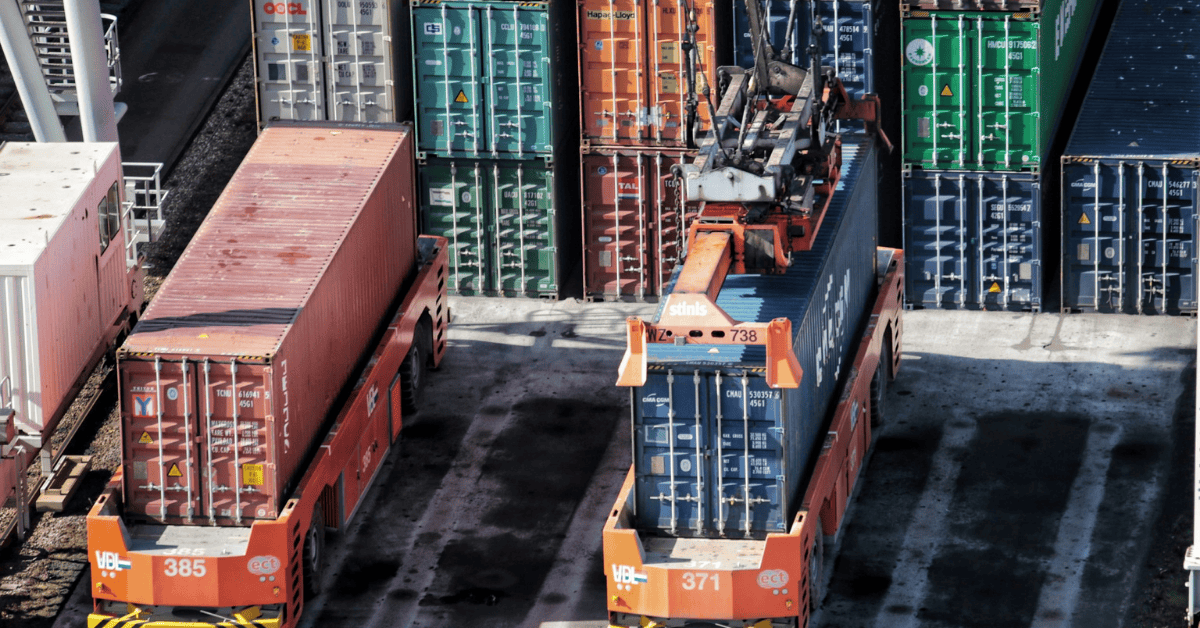Managing Drayage Costs: Guide to Avoiding Hidden Charges

When it comes to the world of freight and shipping, understanding all the costs involved can be a complex endeavor. Drayage, the short-haul movement of shipping containers from ports or rail yards to a warehouse or distribution center, is an essential link in the supply chain, but its rates can be surprisingly tricky to unpack.
While the advertised base drayage rates may seem reasonable, shippers often receive invoices with a litany of additional charges called “accessorials.” These fees can significantly inflate your overall drayage costs, making it critical to understand them and factor them into your budgeting.
How Are Drayage Rates Calculated?
It’s crucial to know how drayage fees are calculated. Typically, you’ll encounter several pricing categories:
- Line Haul Fee: This is the main charge for container movement. It often depends on distance and the type of move needed (door-to-door, etc.).
- Fuel Surcharges: A fluctuating surcharge covers the cost of diesel fuel for the drayage truck.
- Accessorial Fees: All the extra charges applied for services beyond the basic transportation of a container.
What are Accessorial Fees?
Accessorial fees are additional charges incurred beyond the base drayage rate. Drayage companies use these to cover costs associated with situations outside the norm of regular pick-up and delivery. While some are unavoidable, others might be minimized or prevented with careful planning.
Common Drayage Accessorial Fees
Let’s take a closer look at some prevalent accessorial charges:
- Chassis Fees: If the drayage carrier needs to supply a chassis to transport your shipping container, they often bill you separately for the chassis usage. Costs may vary depending on factors like the duration of chassis usage and potential equipment costs associated with chassis rental or usage.
- Chassis Split Fees: A chassis split fee can arise when a container and chassis originate or terminate at 2 separate locations, requiring additional handling. This often happens when the chassis must be picked up from a depot before collecting the container. It can even happen twice in one shipment if the destination doesn’t accept the chassis.
- Overweight Fees: Shipping containers must adhere to legal weight limits. If your container exceeds these, be prepared for overweight fees levied by the carrier.
- Demurrage Fees: This arises when containers remain at the port beyond allotted free days. Carriers generally pass these charges, levied by the port authorities, along to the shipper.
- Drop Fees: Dropping off an empty container at a designated return location may incur a drop fee, especially if there are specific appointment requirements.
- Bobtail Fees: When a carrier delivers a container but cannot immediately pick up an empty one at the same location, they incur additional costs for a return trip. This extra trip results in a bobtail fee, as the truck returns without a trailer (“bobtailing”).
- Pre-pull Fees: If you request the container be moved from the port to a staging area before your scheduled pickup, pre-pull fees will likely apply.
- Administrative Fee: This covers various operational and paperwork-related expenses incurred by the carrier.
It’s essential to be completely transparent with your drayage provider about the specific details of your shipment. If your load is overweight, hazardous, requires refrigeration, or has any specifications beyond a standard, legal-weight container, clearly communicate that at the time of quoting. These details directly impact pricing, and failing to provide them upfront could lead to unforeseen additional charges.
Why Do Accessorial Fees Matter?
Accessorial fees can add substantial, unexpected expenses to your drayage costs. If you fail to factor them in properly, your budgets can get completely out of alignment. These extra fees can quickly negate any apparent savings on a lower base drayage rate.
How to Reduce Drayage Costs
Understanding accessorials isn’t just about avoiding surprises; it’s about actively minimizing drayage fees. Here’s how:
Meticulous Planning
Meticulous planning throughout the shipping process is crucial for minimizing drayage costs. Proactively work to minimize delays at ports or warehouses, as fees can quickly accumulate. Ensure your cargo is correctly packed, that its weight falls within legal limits to prevent overweight fees, and that all necessary paperwork is complete and accurate.
Rate Comparisons
Don’t settle for simply comparing base rates. Instead, request detailed rate sheets from multiple providers. These sheets should meticulously list all potential accessorial fees that could be applied to your specific shipment. Don’t hesitate to inquire about “all-inclusive” rates – these can help you avoid surprise charges lurking in the fine print.
Fuel Surcharge Considerations
Flat rates including fuel can look more expensive than a base rate plus a fuel surcharge. But don’t be fooled by appearances. Carefully calculate the potential impact of fluctuating fuel prices on your overall costs. A seemingly cheaper flat rate might end up costing you significantly more if fuel prices spike.
Strategic Prepulls
Prepulls are a strategic tool that can significantly benefit shippers. Truckers may prepull containers prior to the last free day to proactively prevent demurrage fees, giving you extra time and flexibility. Additionally, prepulling a day prior to delivery can help avoid unexpected delays at the pickup location, minimizing the risk of late arrival penalties and ensuring your cargo arrives on schedule.
Inquire about Wait Time
Ask carriers how much free time is allotted before wait time charges apply. If you have locations with unpredictable shipment readiness, factor in potential wait time costs. Some carriers offer 1 hour free, while others provide 2 hours – this difference could save you $100+ per shipment during peak times.
Chassis Market Knowledge
Understand how chassis are handled in your specific market, including which rail terminals provide wheeled service (container already mounted on a chassis). Chassis splits can significantly impact your costs. For example, the Memphis market often requires two chassis splits, while markets like Mobile have different practices. Being informed about chassis specifics, rather than relying solely on the carrier, can give you an advantage in negotiations.
Leverage Qualified Brokers
Qualified brokers can do the heavy lifting for you, leveraging their extensive network of drayage carriers and in-depth market knowledge to secure competitive pricing, ensuring you get the best value possible. They understand the nuances of the drayage market and can expertly negotiate on your behalf, saving you both time and money.
Scrutinize the Fine Print
The details are in the fine print. Port and congestion charges are oftentimes hidden in the terms and conditions pages of carriers’ websites and not included on the quotes sent to a shipper. These fees get tacked on at the time of invoicing and can add 20%+ to the overall final price.
Take control of your drayage costs
Navigating the complexities of drayage rates and accessorial fees can feel overwhelming. However, by understanding these additional charges and proactively planning to minimize them, you can maintain control over your shipping costs and avoid unpleasant surprises.
Partnering with a seasoned supply chain service provider like Armstrong offers further advantages. We leverage our vast drayage network and extensive market knowledge to secure competitive rates and expertly manage the entire drayage process on your behalf. At Armstrong, we’re committed to making your supply chain as efficient and cost-effective as possible. Contact us today to explore how we can simplify your drayage needs and optimize your bottom line.
